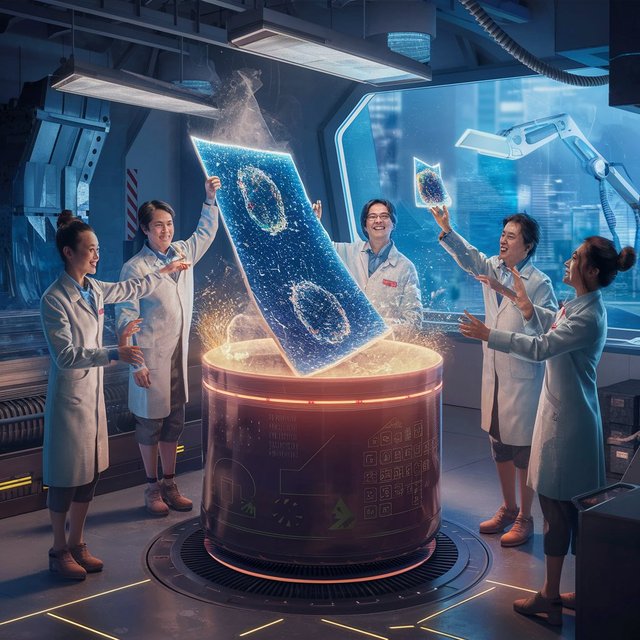Chinese team finds a way to mass-produce nanosheets with unusual properties
A research team in China has achieved a significant breakthrough in the field of nanotechnology. They've developed a new method for mass-producing nanosheets, a two-dimensional (2D) material with unique and promising properties. This innovation has the potential to revolutionize various industries, from energy storage to solar technology.
Nanosheets are incredibly thin sheets of material, typically only one atom thick. This atomic structure grants them remarkable characteristics. The Chinese team's focus lies on nanosheets made from transition-metal tellurides. These specific nanosheets exhibit properties that make them highly desirable for applications like lithium batteries and solar panels.
Previously, producing nanosheets was a slow and laborious process, limiting their practicality. The Chinese team's innovation lies in their "fast and scalable" production method. This new technique utilizes a chemical called lithium borohydride. This chemical offers a key advantage – it's stable and doesn't combust, unlike some previously used methods. This stability allows for a more efficient and potentially safer production process.
The new method boasts impressive results. Researchers report producing over 100 grams of nanosheets in a significantly shorter timeframe compared to traditional techniques. This significant increase in production capacity is crucial for transitioning nanosheets from lab-grown curiosities to real-world applications.
The potential applications of these transition-metal telluride nanosheets are vast. In the realm of lithium batteries, these nanosheets could offer superior performance. They might enable batteries to hold more charge, recharge faster, and potentially even have a longer lifespan. This could significantly impact the electric vehicle industry and portable electronics.
Solar panels could also benefit from the unique properties of these nanosheets. By incorporating them into solar cell designs, researchers believe they could enhance light absorption efficiency. This translates to solar panels that convert more sunlight into electricity, leading to cleaner and more sustainable energy production.

The impact of this research extends beyond these two specific applications. The unique properties of these nanosheets could lead to advancements in other fields like catalysis, sensors, and optoelectronics. With their large-scale production now a possibility, researchers can delve deeper into exploring the full potential of these 2D materials.
This breakthrough by the Chinese team represents a significant leap forward in nanotechnology. The ability to mass-produce nanosheets with valuable properties paves the way for a new generation of technological advancements. As research continues, these nanosheets could play a crucial role in creating a more sustainable and efficient future.
Big hand to the team!
Thank you, friend!


I'm @steem.history, who is steem witness.
Thank you for witnessvoting for me.
please click it!
(Go to https://steemit.com/~witnesses and type fbslo at the bottom of the page)
The weight is reduced because of the lack of Voting Power. If you vote for me as a witness, you can get my little vote.